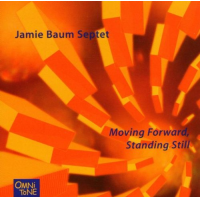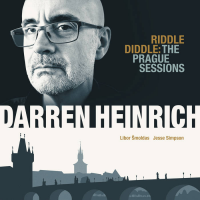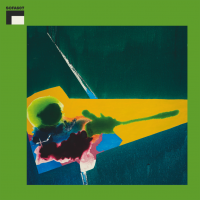Home » Jazz Articles » Album Review » Jamie Baum Septet: Moving Forward, Standing Still
Jamie Baum Septet: Moving Forward, Standing Still
With a four-piece front line that includes saxophonist/bass clarinetist Doug Yates, trumpeter Ralph Alessi and French hornist Tom Varner, Baum has crafted a record that combines an adventurous experimental spirit with a completely approachable style, making for one of the most compelling releases this year. Rounding out the septet with pianist George Colligan, bassist Drew Gress and drummer Jeff Hirshfield, Baum may be working with a relatively small ensemble, but one of the distinguishing strengths of her compositions is an ability to coax a rich diversity of sound from relatively few instruments.
Inspired largely by 20th Century composers including Stravinsky, Bartok and Ives, Baum's writing relies largely on counterpoint, texture and rhythmic displacement to create a broad tapestry over which plenty of room is created for improvisation. Her pieces feature complex arrangements, often consisting of multiple movements that spur different contexts for soloing within a relatively short time frame. "Central Park," for example, starts with an impressionistic 15/4 vamp that provides space for Varner to demonstrate that the French horn can be a viable jazz instrument, before gradually shifting into a straight-time motif that feels slightly askew, then settling into an outer-reaching solo from Alessi. Baum concludes the piece with a solo that sounds like it is being fed through a harmonizer, and makes a strong and fervent case for her instrument.
The pieces range from the ascetic chamber jazz of "Bar Talk" to the more lightly swinging "South Rim." She cleverly combines "From Scratch," a piece from percussionist Trilok Gurtu's Living Magic , with her own "Primordial Prelude," the first being a lightly funky affair, the second a more implied piece that still relies on a clearly-defined rhythm. As different as the two pieces are, they manage to coexist comfortably, making perfect sense together.
Moving Forward, Standing Still is that rarity of an album—one that utilizes deep and complex structures to create something completely accessible. Consequently it carries the potential for widespread appeal and will hopefully raise Baum's visibility as both a serious composer and a performer on an instrument that clearly needs to be taken with more than a grain of salt.
Visit Jamie Baum on the web.
Track Listing
All Roads Lead to You, Spring Rounds, In the Journey, Clarity, Medley: From Scratch/Primoridal Prelude,South Rim, Central Park, Bar Talk, Spring, Rivington Street Blues
Personnel
Jamie Baum
fluteJamie Baum—flute and alto flute; Ralph Alessi—trumpet, flugelhorn; Doug Yates—alto saxophone and bass clarinet; Tom Varner—French horn; George Colligan—piano; Drew Gress—bass; Jeff Hirshfield—drums
Album information
Title: Moving Forward, Standing Still | Year Released: 2004 | Record Label: OmniTone
Tags
PREVIOUS / NEXT
Jamie Baum Concerts
Support All About Jazz
 All About Jazz has been a pillar of jazz since 1995, championing it as an art form and, more importantly, supporting the musicians who make it. Our enduring commitment has made "AAJ" one of the most culturally important websites of its kind, read by hundreds of thousands of fans, musicians and industry figures every month.
All About Jazz has been a pillar of jazz since 1995, championing it as an art form and, more importantly, supporting the musicians who make it. Our enduring commitment has made "AAJ" one of the most culturally important websites of its kind, read by hundreds of thousands of fans, musicians and industry figures every month.



















